Japanese garden and prehistoric garden at Zilker Botanical Garden
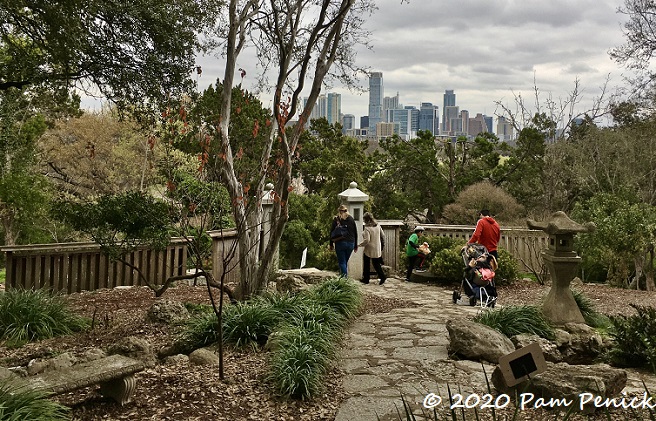
Visiting the Japanese garden at Zilker Botanical Garden last week, I noticed all kinds of changes for the better at our perennially underfunded city garden. In the upper level of the Taniguchi Japanese Garden, pruning of perimeter trees has opened up a nice view of our ever-growing downtown.
Taniguchi Japanese Garden
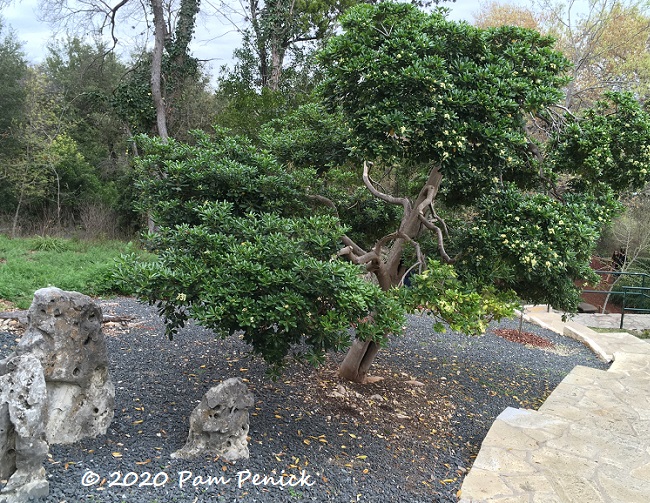
A new limestone stairway and path has also been installed, vastly improving the main access into the garden. Alongside it, a beautifully pruned pittosporum grows in a “lake” of black gravel accented by holey-limestone scholar’s rocks.
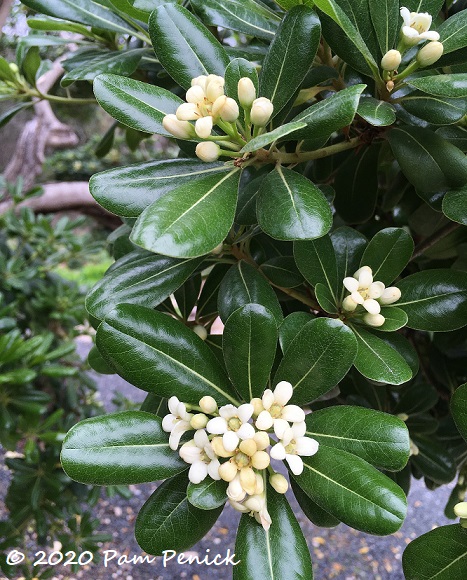
The pittosporum’s creamy blossoms smell wonderful.
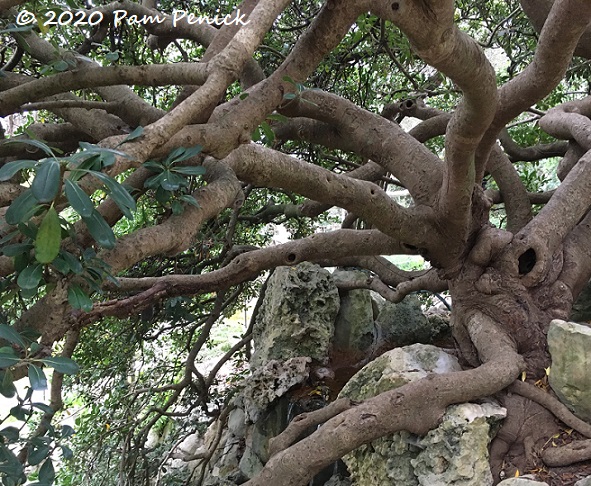
A sinuous, ancient pittosporum at the top of the waterfall is still as breathtaking as ever.
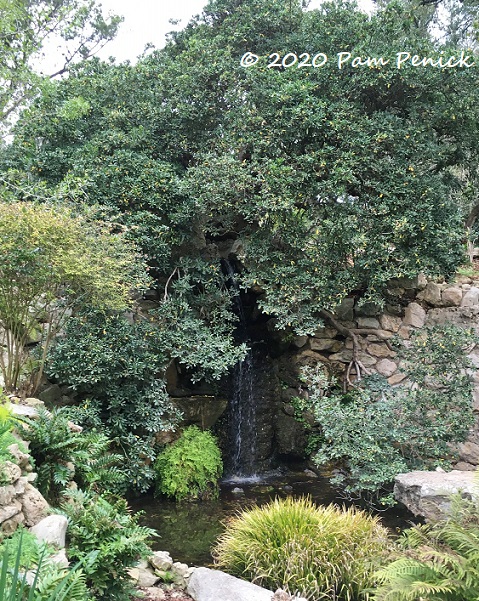
Here it is again from pond level below, veiling the top of the waterfall.
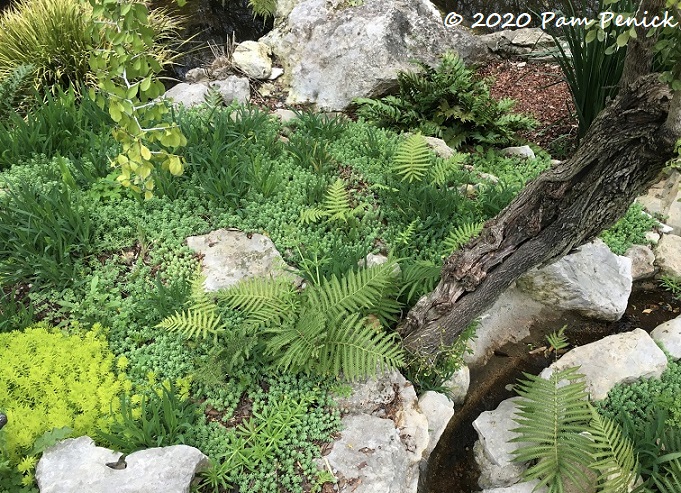
A pretty tapestry of fern and sedum grows amid limestone boulders near the waterfall.
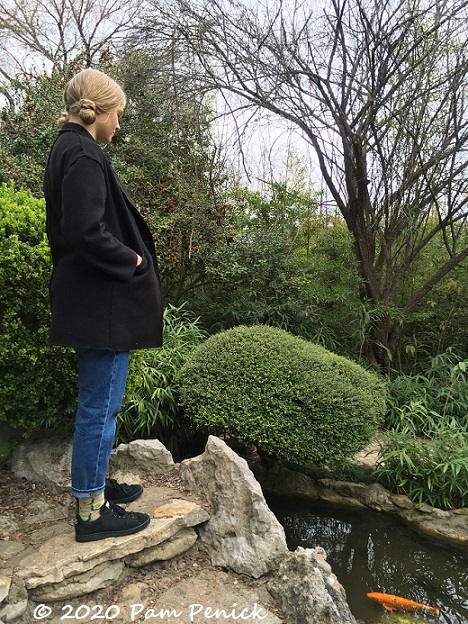
The koi ponds are looking good.
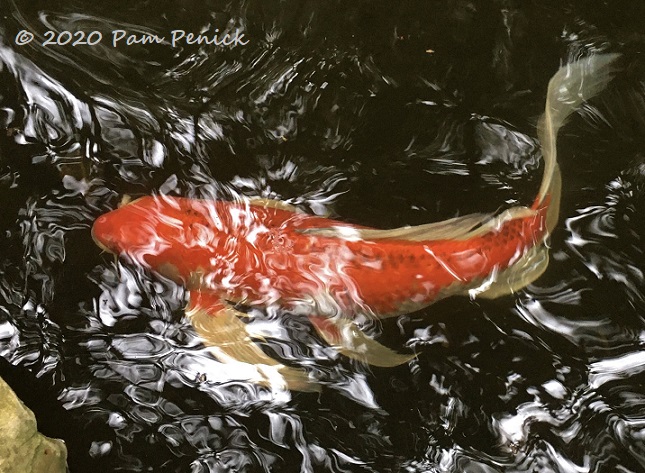
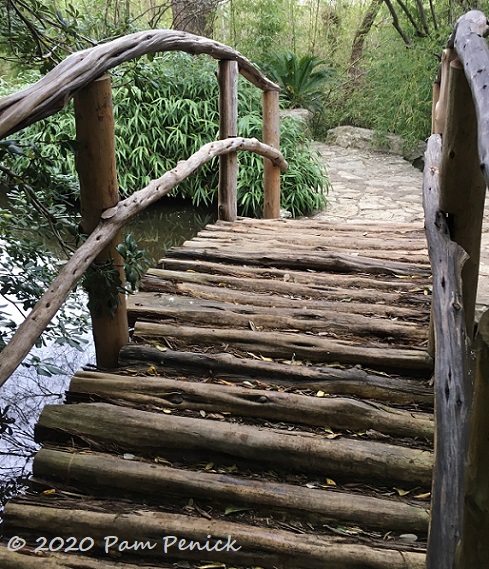
The cedar-log moon bridge is always fun to cross.
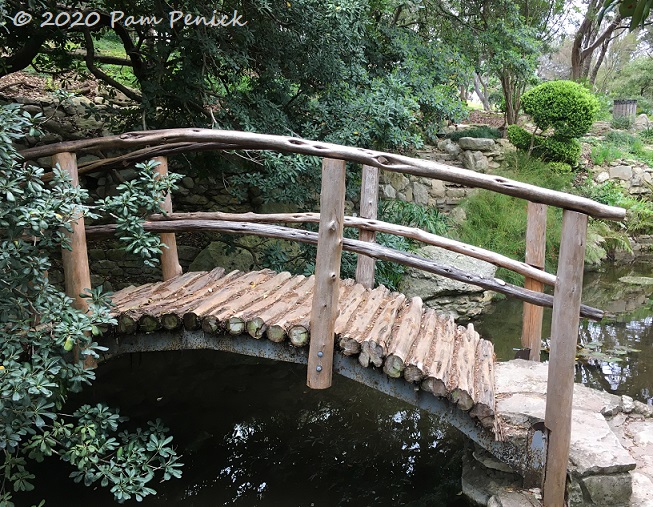
Here it is from another angle.
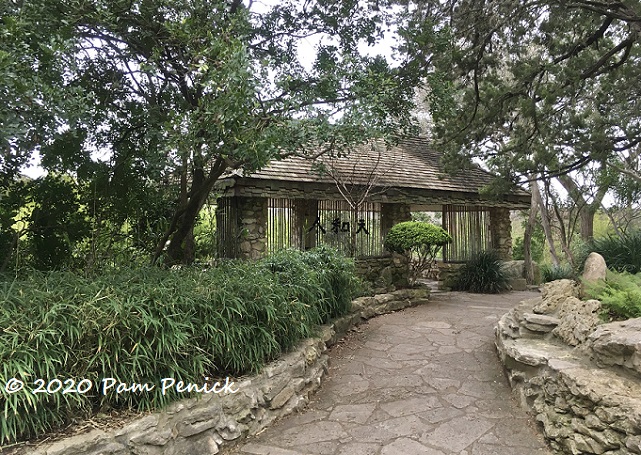
An airy teahouse and surrounding greenery is neatly tended.
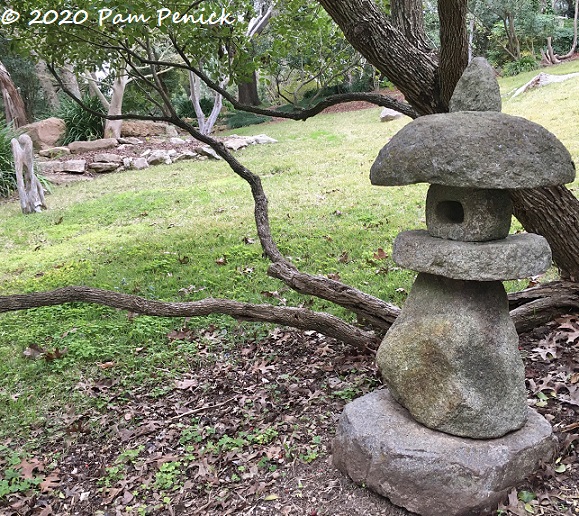
Stone lantern
Hartman Prehistoric Garden
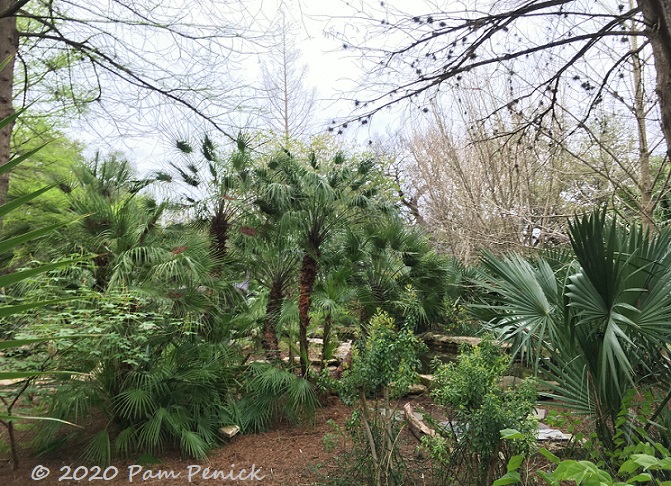
My other favorite part of Zilker Garden is the Hartman Prehistoric Garden on the lowest level. Palms and palmettos thrive here.
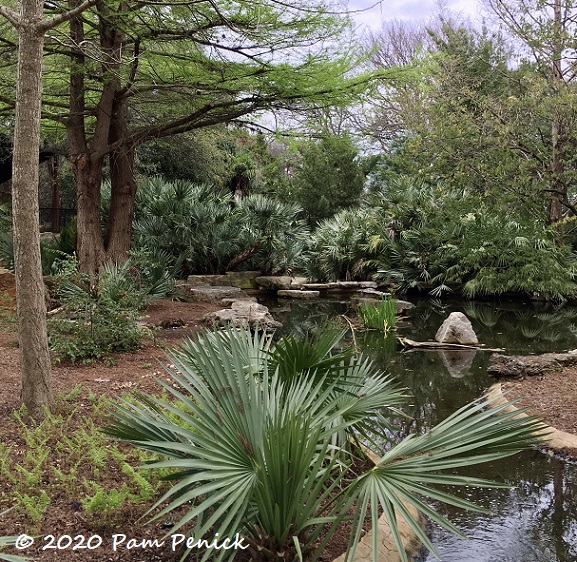
All the plants in this garden “represent the types that existed at the time of the dinosaurs. These are the spore producing plants (ferns, horsetails and liverworts), the gymnosperms (cycads, conifers and ginkgos) and the first angiosperms (magnolias and palms),” according to the website.
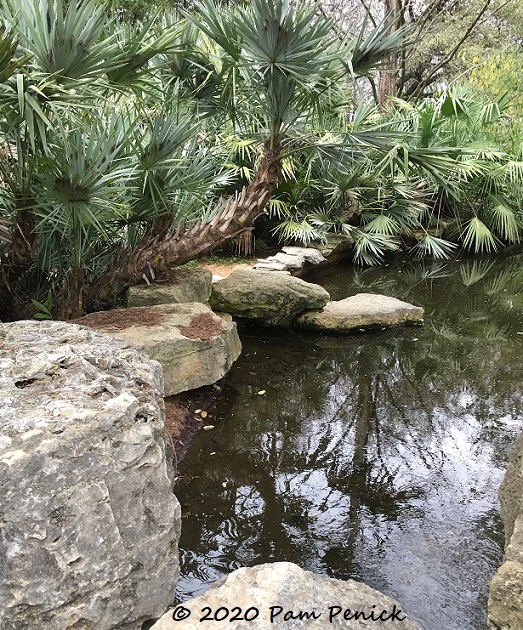
Foliage drama
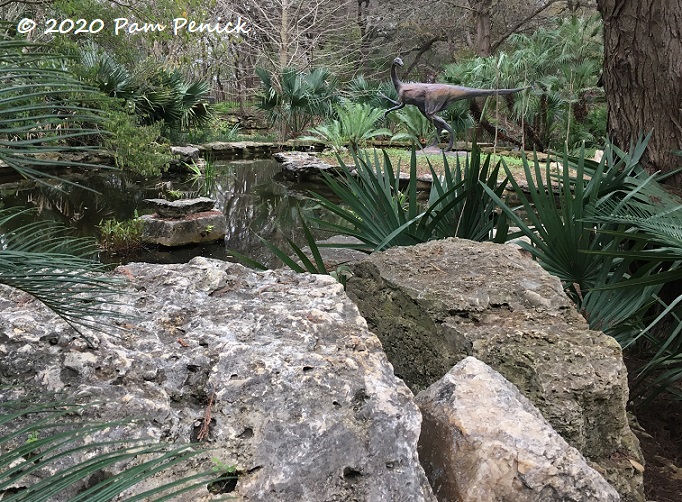
There’s even a dinosaur!
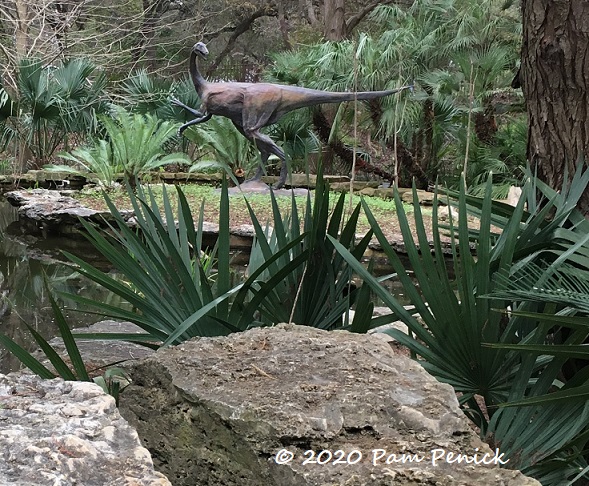
“The life-size sculpture on Dino Island is an Ornithomimus (Greek for ‘bird-mimic’), the dinosaur that left tracks of its three toed feet in the gardens. The Ornithomimus is one of a group of medium-size elongated dinosaurs that lived in North America during the late Cretaceous period, 97 to 65 million years ago.”
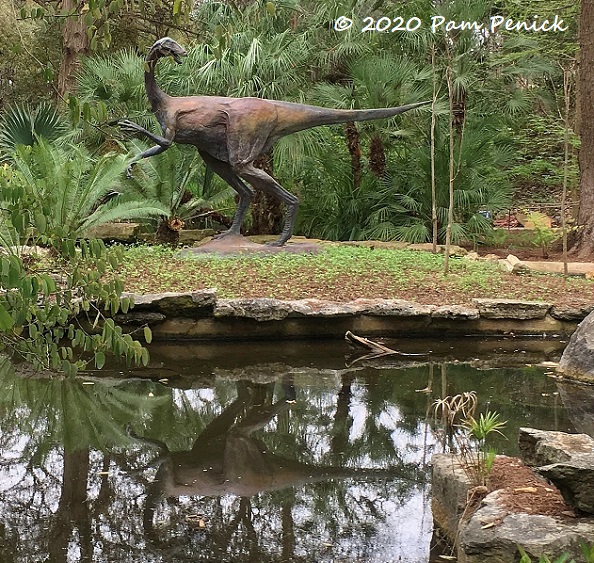
Rawr!
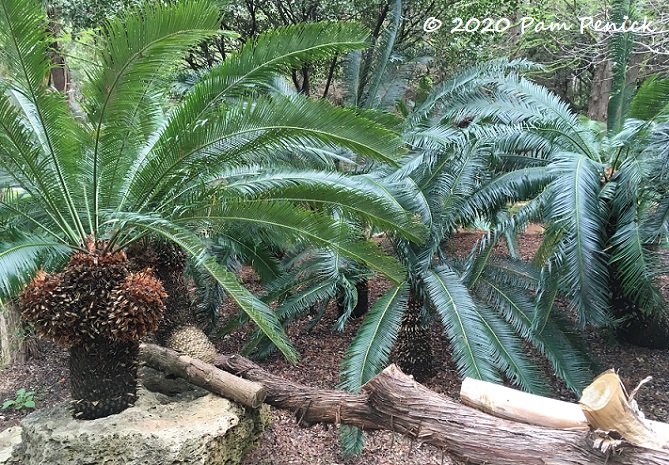
The shiny, feathery fronds and stout, stubbled trunks of sago palms make a tropical-looking grove along one side of the garden.
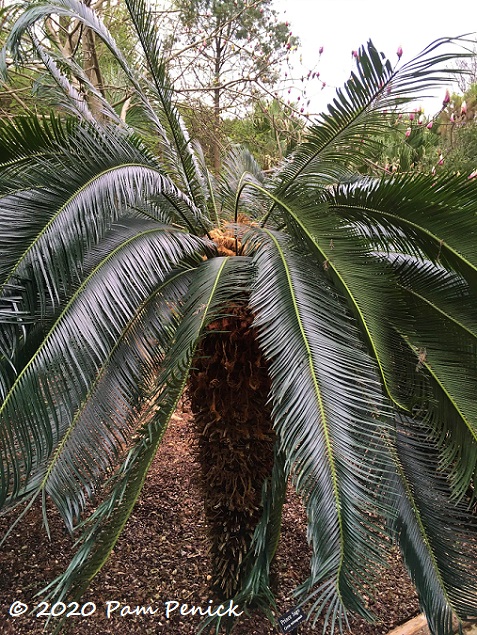
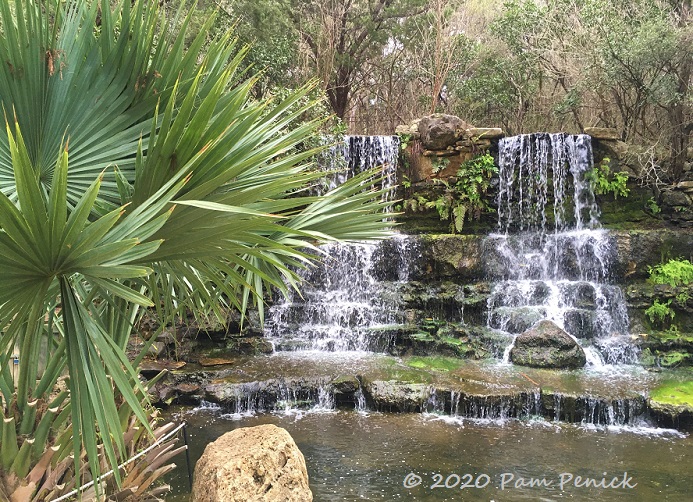
On the other side, twin waterfalls spill over a rocky ledge.
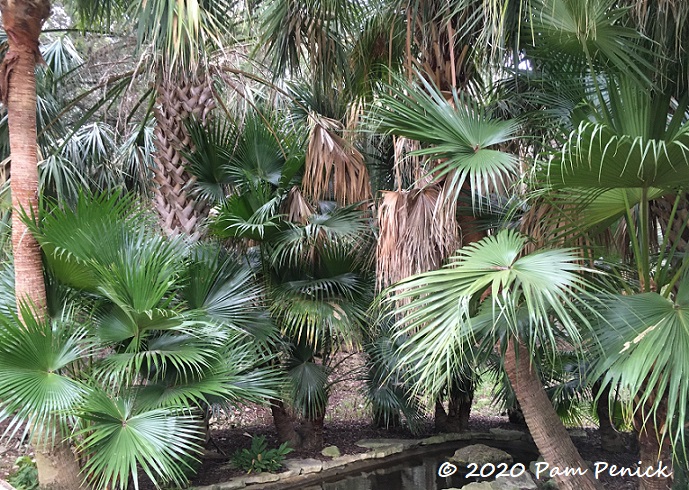
But it’s the palmettos that stand out at this time of year, when other plants are still dormant.
__________________________
Digging Deeper
Come learn about gardening and design at Garden Spark! I organize in-person talks by inspiring designers, landscape architects, authors, and gardeners a few times a year in Austin. These are limited-attendance events that sell out quickly, so join the Garden Spark email list to be notified in advance; simply click this link and ask to be added. Season 8 kicks off in fall 2024. Stay tuned for more info!
All material © 2025 by Pam Penick for Digging. Unauthorized reproduction prohibited.


I don’t remember the Japanese Garden at Zilker. You surely have posted about it before. I really like the old pittosporum with those gnarly limbs. That Prehistoric garden does fire the imagination. The statues of dinosaurs really make it seem lively. I would almost expect to see a real specimen there. Your exchange student (?) looks a bit pensive. I wonder if she is a bit homesick. It is that time of year for migration.
Yep, I’ve posted several times about this garden over the past 12 years, and if you’re interested, you can find all the links on my Gardens page; scroll down to Texas and then to Zilker Botanical Garden. https://www.penick.net/digging/?page_id=17962
I love the Prehistoric Garden. The folks redesigning the park surrounding the La Brea Tar Pits could learn something from Zilket I think.
I like that idea! Hope to see La Brea one day.
I usually don’t like limbed-up evergreens. They have always looked contrived to me, especially when the top is sheared. But the pittosporum trunk is incredible. Is limbing up a common practice for Japanese gardens? Like bonsai on a large scale?
Meticulous pruning is part of every Japanese garden, often to create a windswept or ancient look or the illusion that a tree is more distant than it really is. I just finished a book about Japanese gardens, which taught me a lot, and I’ll be reviewing it in my next post.